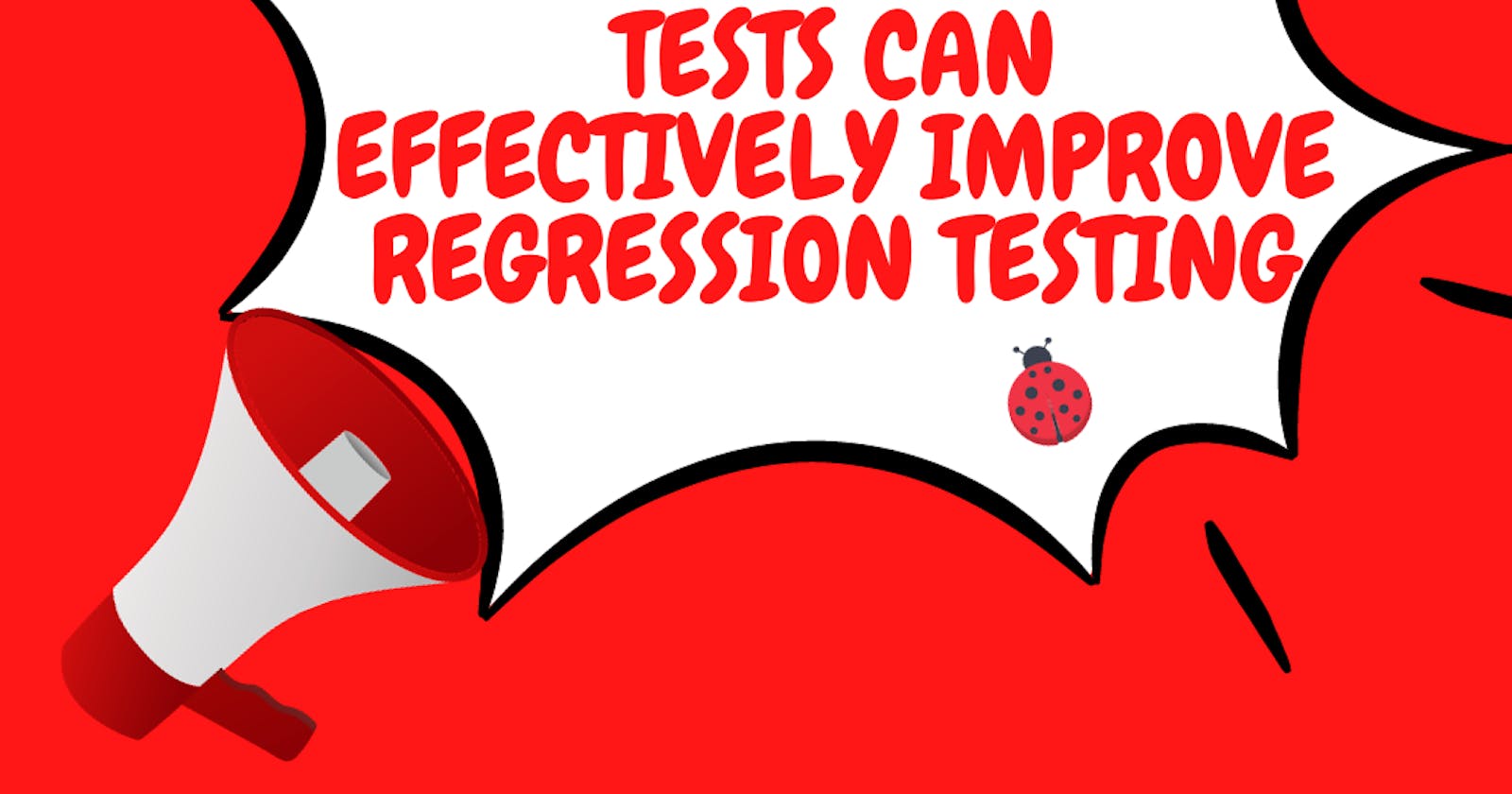What is regression testing?
Regression testing is like trying on your favorite jeans after a few months of indulging in your favorite comfort snacks/foods to discover it’s no longer size - it ensures that your software still fits and functions correctly after changes have been made. In simpler terms, regression testing is the process of retesting a software application to ensure that new changes or fixes haven't unintentionally broken existing functionality.
Importance of regression testing
Imagine ordering a pizza and receiving a box full of toppings but no crust. Regression testing plays a crucial role in detecting unexpected bugs or defects that may have slipped through the cracks during the development process. It ensures that the software remains stable and reliable, and delivers the expected functionality, even after modifications have been made. Without proper regression testing, software updates can turn into a real-life game of whack-a-bug, leaving users frustrated, developers scratching their heads, and QA testers sipping their bottle of Coca-Cola.

Understanding the challenges of regression testing
- Complexity of software systems
Software systems have a knack for becoming as complicated as that jigsaw puzzle you attempted to put together during quarantine. The more features and interactions your software has, the more challenging it becomes to test each component individually and ensure they all work harmoniously.
- Time and resource constraints
Time is a precious commodity, just like that limited edition vinyl you've been eyeing. Regression testing often competes for resources and attention within development cycles, leading to rushed and inadequate testing. This trade-off can result in critical defects slipping into production, causing more headaches than realizing you've run out of coffee on a Monday morning.
- Identifying impacted areas
Determining which parts of your software have been affected by changes is like solving a mysterious case with a magnifying glass. Manual identification of impacted areas can be time-consuming and error-prone, leaving room for untested corners that may come back to haunt you later.
The role of automation tests in regression testing
What are automation tests?
Automation tests are like little minions that tirelessly execute repetitive tasks with precision, allowing you to focus on sipping your third cup of coffee. In the context of regression testing, automation tests are scripts or programs that simulate user interactions and verify expected outcomes, eliminating the need for manual testing.
Advantages of using automation tests in regression testing
Automation tests bring a multitude of benefits to the regression testing table. They reduce human errors, increase test coverage, monitor any trigger and accelerate the execution of tests. Think of them as the superheroes of testing, saving the day by catching defects faster and more reliably than a sniffer dog finding contraband.
Benefits of using automation tests for regression testing
- Improved efficiency and time savings
Using automation tests for regression testing is like having your own personal assistant that completes repetitive tasks quicker than you can say "supercalifragilisticexpialidocious." Automation allows you to execute tests faster, freeing up valuable time for more important tasks, such as creating more test cases, studying your bible, or binge-watching your favorite TV shows guilt-free.
- Real-Time Monitoring
Automation tests can provide real-time monitoring capabilities that allow QA engineers to monitor various aspects of the application during regression testing. This real-time monitoring enables early detection of anomalies, performance bottlenecks, or unexpected errors that might arise during regression testing.
- Alerting and Notifications
Depending on setup or integration, QA engineers can promptly be notified of any issues that may occur during regression testing. Customizable alerts can be set up to trigger notifications based on specific conditions, such as elevated error rates, response time degradation, or resource utilization thresholds. These alerts help QA engineers stay informed about critical issues and take immediate action, ensuring that regression testing can proceed smoothly.
- Enhanced accuracy and reliability
Automation tests are like a reliable friend who always shows up on time and never forgets your birthday. They execute tests with precision, reducing the chance of human error and providing consistent results. You can trust automation to catch those sneaky bugs that you might miss in the manual testing process.
- Increased test coverage
Automation tests are like superheroes with superhuman abilities - they can cover more ground than a cheetah on roller skates. With automation, you can test a broader range of scenarios and combinations, ensuring better coverage and reducing the risk of encountering unexpected surprises in production.
Implementing automation tests for regression testing
Regression testing is an essential part of software development, ensuring that changes made to an application don't unintentionally break existing functionality. And while running these tests manually can be time-consuming and error-prone, automation tests can make the process faster, more efficient, and downright enjoyable (well, almost). Here's how you can implement automation tests for regression testing.
Selecting the right automation testing tools
First things first, you need to find the right automation testing tools for the job. There are plenty of options out there, from open-source tools like Selenium to commercial solutions like Datadog (monitoring as a service) or TestComplete. Your choice will depend on factors such as your budget, project requirements, and personal preferences. Just remember, don't rush into picking a tool. Take your time to research and test different options to find the one that suits your needs like a glove (not literally, of course).
Setting up an automation testing environment
Once you've chosen the tool, it's time to set up your automation testing environment. This includes installing the necessary software, configuring the test environment, and ensuring everything is working smoothly. It's like creating a cozy workspace, but instead of a comfy chair, you have servers, databases, and perhaps a cup of coffee to keep you company. Setting up the environment correctly is crucial for your automation tests to run smoothly and accurately.
Creating effective test scripts
Ah, the heart and soul of automation testing – test scripts! These magical lines of code will navigate through your application, verifying that everything works as expected. Creating effective test scripts requires a good understanding of the application's functionality and meticulous attention to detail. Think of it as writing a well-structured story that the automation tool can follow without getting confused (unlike some humans we know).
Best practices for effective automation tests in regression testing
To make the most out of your automation tests for regression testing, it's important to follow some best practices. Here are a few tips to keep in mind:
Prioritizing test cases
You can't test everything all the time (unfortunately). So, it's crucial to prioritize your test cases based on risk and impact. Focus on the critical functionalities and areas that are most prone to regression issues. Not all tests are created equal, and some carry more weight than others (just like that extra slice of pizza you can't resist).
Test data management
Test data is like the fuel powering your automation tests. Proper test data management involves creating realistic and diverse datasets that cover various scenarios and edge cases. It's like throwing a party and inviting different types of guests to see how your application handles different situations. Just make sure your test data doesn't get rowdy and mess up your test results (we don't want any drama).
Continuous test integration and deployment
Automation tests should be integrated into your development and deployment processes seamlessly. By incorporating them into your continuous integration and continuous deployment pipelines, you can catch regressions early and ensure a steady flow of high-quality software. It's like having a safety net that automatically catches any potential issues before they reach your users (kind of like a superhero cape).
Overcoming common pitfalls in automation tests for regression testing
Even with the best intentions, automation testing can sometimes stumble upon a few hurdles. Here are some common pitfalls and how to overcome them:
Maintenance and updates
As your application evolves, your automation tests need to keep up. Regularly review and update your test scripts to accommodate changes in functionality and UI. Just like a wardrobe update, your tests need to stay stylish and relevant as your application grows. Keep an eye on any changes and be prepared to make adjustments. Adaptability is key!
False positives and false negatives
Automation tests are not immune to errors, and sometimes they can produce false positives (false alarms) or false negatives (missed issues). To minimize these false readings, it's crucial to analyze and verify test results carefully. Don't blindly trust the robot (they can be deceiving). Use your human intuition and investigation skills to confirm the validity of each test result. You got this Sherlock!
Test environment stability
Like a rickety roller coaster, an unstable test environment can wreak havoc on your automation tests. Ensure your test environment is well-maintained, reliable, and consistent. It should mirror your production environment as closely as possible. Keep it stable, secure, and free from unexpected surprises that could derail your regression testing journey.

In conclusion, automation tests for regression testing can be a game-changer in improving the efficiency and effectiveness of your software development process. By selecting the right tools, setting up a solid environment, and following best practices, you can ensure that your applications keep moving forward without any pesky regressions holding them back. So, embrace the world of automation testing and let your application shine like a rockstar on the stage of quality software. By automating repetitive and time-consuming tasks, organizations can significantly reduce the effort and resources required for regression testing while increasing the reliability and accuracy of their test results. Implementing automation tests, along with following best practices and staying updated with emerging trends, can empower teams to achieve faster and more effective regression testing. As software systems continue to evolve, embracing automation tests will remain a critical aspect of ensuring high-quality software products with minimal risk and maximum efficiency.

